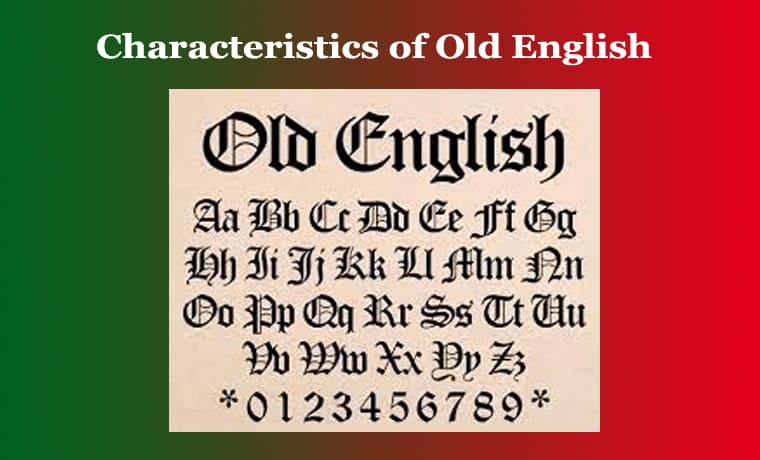Characteristics of Old English
Characteristics of Old English
Introduction:
Old English, the earliest form of the English language, holds a rich linguistic history that extends from the 5th to the 11th century. Often associated with epic poems like “Beowulf” and historical documents such as the Anglo-Saxon Chronicle, Old English showcases distinct characteristics that set it apart from its modern counterpart.
Germanic Roots:
Old English emerged from the Germanic languages spoken by the Anglo-Saxons who migrated to England in the early medieval period. The influence of Germanic dialects is evident in the vocabulary, grammar, and overall linguistic structure of Old English.
Anglo-Saxon Runes:
Written Old English was initially recorded using runes, an ancient Germanic writing system. However, as Christian missionaries introduced the Latin alphabet, it gradually replaced the runic script, marking a significant shift in the written representation of the language.
Inflections and Declensions:
Old English was a highly inflected language, relying on a system of declensions to convey grammatical information. Nouns, adjectives, pronouns, and verbs underwent various inflections to denote case, gender, number, and tense. This complex inflectional system contributed to the language’s flexibility in word order.
Three Grammatical Genders:
Old English nouns were categorized into three grammatical genders: masculine, feminine, and neuter. The gender of a noun influences its declensional endings and its agreement with adjectives and articles.
Vocabulary and Word Formation:
Old English incorporated a substantial number of Germanic words, many of which have survived in modern English. However, the language also featured a range of terms reflecting the cultural and societal context of the Anglo-Saxons, including words related to kinship, nature, and warfare.
Alliterative Verse:
A distinctive feature of Old English poetry, including works like “Beowulf,” is the use of alliterative verse. In this poetic form, stressed syllables within a line begin with the same consonant sound, creating a rhythmic and memorable pattern.
Influence of Latin and Norse:
While Old English maintained its Germanic roots, it underwent significant influence from Latin due to the Christianization of England. Additionally, contact with Norse speakers during the Viking Age left an indelible mark on the language, introducing new words and idioms.
Absence of Articles:
Unlike modern English, Old English did not employ definite and indefinite articles (“the” and “a/an”). Instead, the function of articles was often conveyed through declensions and context.
Conclusion
Exploring the characteristics of Old English offers a glimpse into the linguistic intricacies of a bygone era. The language’s evolution, shaped by cultural, historical, and societal factors, laid the foundation for the English we know today. While Old English may seem distant, its influence persists in the roots of modern vocabulary and the enduring legacy of its literary treasures. 0 0 0. Characteristics of Old English
Also Read: Modernism in Literature










